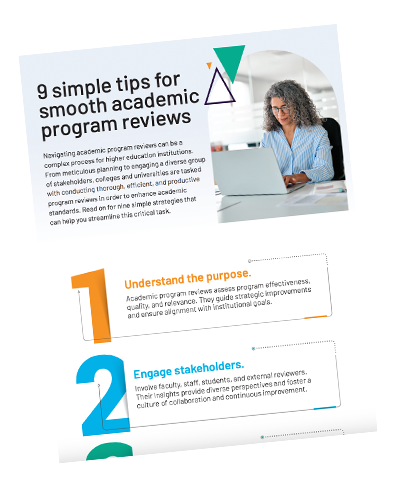Navigating academic program reviews can be a complex process for higher education institutions. From meticulous planning to engaging a diverse group of stakeholders, colleges and universities are tasked with conducting thorough, efficient, and productive program reviews in order to enhance academic standards. Read on for nine simple strategies that can help you streamline this critical task.
Academic program reviews assess program effectiveness, quality, and relevance. They guide strategic improvements and ensure alignment with institutional goals.
Involve faculty, staff, students, and external reviewers. Their insights provide diverse perspectives and foster a culture of collaboration and continuous improvement.
Use qualitative and quantitative data. Evaluate student learning outcomes, graduation rates, employment statistics, and feedback to identify strengths and areas for improvement.
Ensure programs align with the institution’s mission, strategic plan, and accreditation standards. This alignment demonstrates coherence and commitment to overall institutional success.
Provide clear, specific, and achievable recommendations. Focus on strategies to enhance program quality, resource allocation, and student success.
Create a timeline and assign responsibilities for implementing recommendations. Regularly review progress and make adjustments as needed to achieve desired outcomes.
Maintain thorough documentation of the review process, findings, and actions taken. This transparency supports accountability and provides a reference for future reviews.
Invite external experts to review and provide feedback. Their impartial perspective can identify blind spots and suggest innovative solutions.
Encourage ongoing assessment and refinement of programs. Emphasize the importance of adaptability and responsiveness to changing educational needs and trends.


